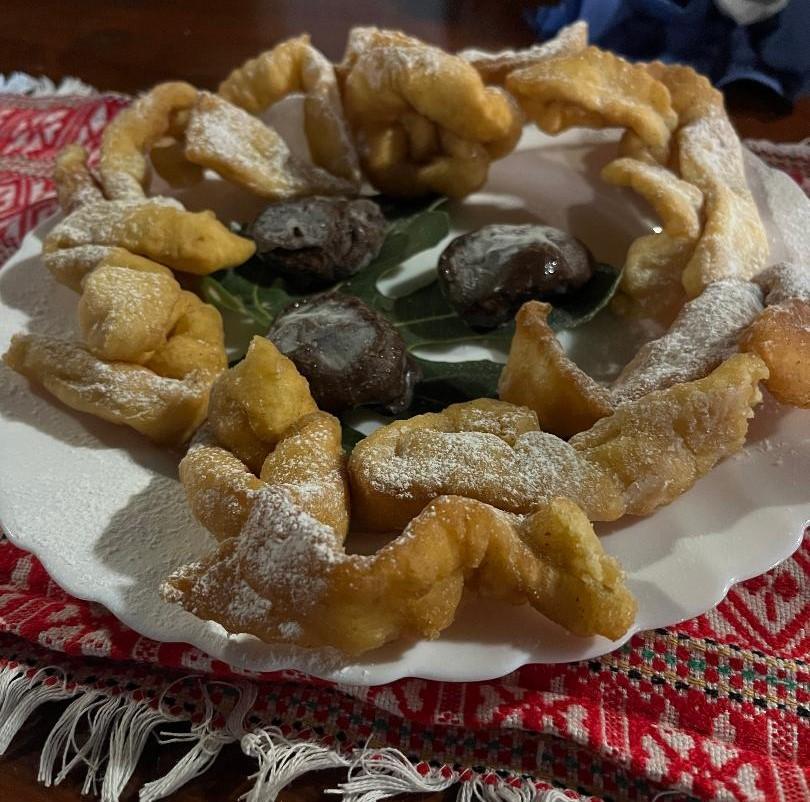MAKING KROSTULE
My fascination with pastries probably stems from the fact I can’t eat most of them because of the gluten, but being able to do so is a fantasy I play out with the characters in my books. Fran in The Collaborator’s Daughter prefers making fancy Croatian cakes, but Antonia in The Olive Grove certainly tries her hand at making krostule.
The little fried pastry knots in the picture come from Korcula too, from traditional restaurant Konoba Belin, where I went for a fabulous… if enormous… meal with my Croatian co-conspirator Darko. They were served with chocolate covered figs but I don’t expect anyone to need a recipe for those. However the krostule are a different matter. Like doughnuts, you need to be prepared to tie them in knots then fry them in oil, which isn’t for the faint hearted.
The flavouring can be anything you like, but traditionally it’s citrus rind or vanilla, with a good dollop of alcohol as well. If you don’t have Croatian rakija to hand, rum or even whisky would do nicely instead.
First sift 500g of plain flour and 2 teaspoons of baking powder together. In another bowl beat 2 eggs and between 50-100g of sugar (depending on how sweet you like things) until the mixture becomes foamy. To this you add a tablespoon of booze, two tablespoons of oil or melted butter, and the flavouring; either a tablespoon of vanilla essence, or the grated rind of either a lemon, an orange, or half of each. Then add the egg mixture slowly to the flour to make the dough, adding milk if needed to shape it into a ball.
Now the tricky bit. Once the dough has rested for 30 minutes to an hour, depending on how warm it is, roll it out until it is thin, but still easy to handle, before cutting it into strips long enough to tie into knots. 1-2 cm wide by 8-12 cm long seems to be the norm. And as for the knots, the shapes in the picture are little more than twists really, but you can make them more elaborate if you like. Finally deep fry them in hot oil for a minute or two on each side, until they are golden brown. Then pop them on kitchen paper to drain any excess oil before dusting with icing sugar. They’re best eaten warm, or at very least fairly soon after cooking, or they tend to go hard.
